SidKnee - the story of my ACL recovery
Published:
SidKnee - the story of my ACL recovery
I had an accident in early 2022 which led to a torn ligament in my knee. The recovery from that injury had its ups and downs. Since it has been a year since my surgery and the whole process was quite arduous where most of my life decisions were dependent upon my knee, I thought I should write about my journey through the whole thing and hence this blog.
Bibliography
There are going to be a few jargon that I will be using and would like to point them out at the beginning itself so that you guys don’t get confused.
- ACL - Anterior Cruciate Ligament (the ligament I tore)
- PCL - Posterior Cruciate Ligament
- MCL - Medial Collateral Ligament
- LCL - Lateral Collateral Ligament
- PT - Physiotherapy (the thing you do to get better)
- OP - Operation (duh!)
- Rehab - Rehabilitation (obviously)
- PCP - Primary Care Physician (maybe just a US thing?)
- ROM - Range of Motion (of the joint)
- Quad - Quadriceps muscles (a group of muscles in front of your thigh that contain more mass than any other muscle group in your body unless you skip leg days at the gym:)
- r/ACL - The subreddit for all things related to ACL injuries,
Why am I writing this blog?
Below are some of the reasons I am writing this blog:
- Not many people know what an ACL is and how bad a torn ACL injury is: This injury information is generally on a “knee-to-know” business. Like most injuries, no one cares about that body part till they injure that body part themselves. This happened to me, I was totally unaware of how bad ACL injuries are, even after seeing so many football (soccer for folks in the US) players get injured. Most people do not know what this injury entails how it is different from any other ligament tear and how gruesome the recovery from it is. Especially if doing sports is a major hobby in your life.
- Point out my recovery process: I had a slower recovery right after the surgery but it got better with more hardwork and PT. So this blog serves to show people that everyone’s recovery is different and you do not k-need to compare yourself with others (the recovery freaks on r/ACL, I am looking at you).
- Point out how important a support system is during recovery so that if you have friends going through a similar injury, you reaching out to them can be really helpful.
- List some of the resources I used for recovery.
- Point out the mistakes I made during my rehab so that others don’t do the same.
- Point out some of the positive things that happened because of the injury. Although injuries are never nice and the whole recovery process can be frustrating, there can still be some positive things that can happen.
- What can you do to avoid ACL tears? Disclaimer: there is no guarantee that it will avoid it and I am no expert at giving any medical suggestions even though I am a doctoral candidate now:) I will just point out some things that helped me make my knee feel stronger than it was before surgery.
- Acknowledge and thank everyone who helped me during my rehab without whom I would not have been able to get back to my pre-injury fitness levels.
- Making Memes (probably the main reason): To make memes about some of the stuff I found funny while writing this blog and post them here:)
DISCLAIMER
This blog is just something that I wrote to talk about my experience and this is in no way a medical recommendation for any of the injuries. Listen to your surgeons and physiotherapists instead, they know much more than me! Also, everyone’s recovery from an injury is different so do not compare your recovery to mine if you are also going through a similar injury.
The Injury
The ski trip
The day was 26th Feb 2022. My grad school department student association had organised a skiing trip to the “Gunstock” mountain resort. (“How much more American can this name get?” was what my PCP had to say about the name of this place when I met him after the injury:)). I was quite excited about this trip because it was the first time I was going skiing with my friends because all other instances I went skiing were with family members. I had done skiing before this trip as well but I was in no way an expert at skiing and hence just stuck to some of the simple green slopes (the skiing slopes are given colour codes according to their difficulty levels where green is the simplest one).
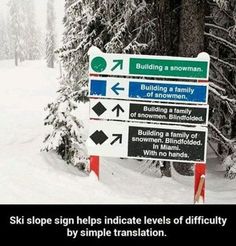



The High of Skiing
I stuck with these two other friends of mine Sathwik and Evan who were also not confident about skiing on the more complex slopes before getting familiar with skiing on slightly easier slopes with high speeds and turns. I think we were doing pretty well by the time our group stopped for lunch. I was feeling like a “Skiing God” because the speed I was skiing right before our lunch break was way faster than others doing the same slope. Also, I was in control of my skiing at all times. So it was not like I was reckless. I was weaving nicely through the traffic to avoid collisions with others and any obstacles.
The Lunch Break
Then everything changed when the lunch break happened! bonus points if you get the ATLA (the famous kneeckolodeon show) reference. Right after eating a Caesar salad (because the place did not have anything else for vegetarians) for lunch, I made the mistake of going to a steeper slope. Although the slope was still a green one, this one had boulders and ramps in between which skiers could choose to jump over. This slope was so high that it took us around 30 minutes to get to the top of it on a ski lift. Once we reached the top, the descent began. I made sure that I stayed with the group of friends I went with. We planned on descending down chunks of slopes in pieces so that we could record everyone’s downhill descent on video. I did the first 2-3 mini slopes in that part quite well but the one that was captured on camera was not one of my best runs (see below).
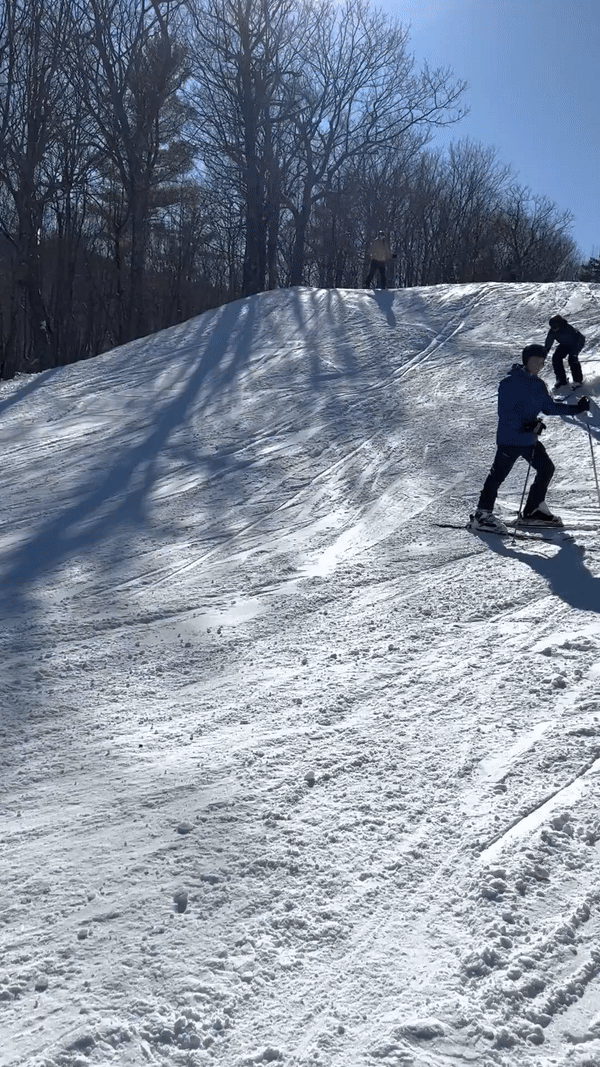
This was when I got distracted and did another run of the next slope when no one was paying attention. I was going downhill the next mini-slope and to my surprise, another skier jumps right above me (using a ramp) and landed right in front of me. Now, I was not expecting this skier to appear out of thin air right in front of me. To avoid a collision with that skier I do the parallel stop because that seemed to be the fastest way to stop. But since I was mentally not ready to stop, I mess it up and fell down whilst hearing the dreaded pop sound of the ACL tearing. I tried to get up after falling down but damn, the knee pained so much! I thought to myself, that it might just be a sprain and just sat down in the cold snow for some time before trying to get up once more (which obviously fails). Now I am sitting here in the cold, don’t know where my friends are and have zero experience with the American healthcare system. I had heard stories about ambulance trips costing $3000 and huge bills.
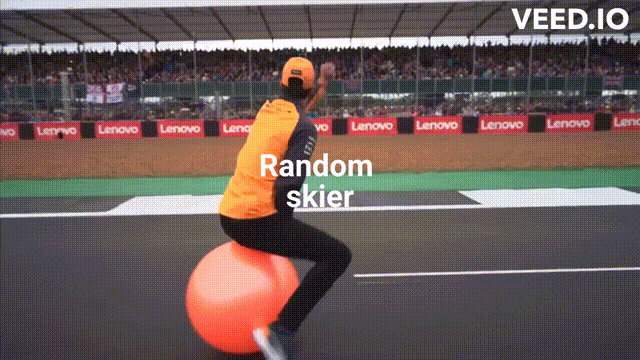



After like another 15 minutes of sitting in the cold, a kind lady who was skiing past sees me sitting there alone and comes up to me to ask if I am doing alright. That’s when I tell her that I think I have broken my knee and k-need help getting down. She then calls the ski patrol to take me down to the first aid centre. Now this ski patrol’s sledge is so scary: it is literally like a coffin in which you get in and is dragged down through the slopes by the ski patrol. He locks me up in that coffin (erm sledge) and starts pulling me down. The downhill journey from there was quite uncomfortable. The whole thing shook so much, my head was being vigorously thrown from one side to another like a rag doll.
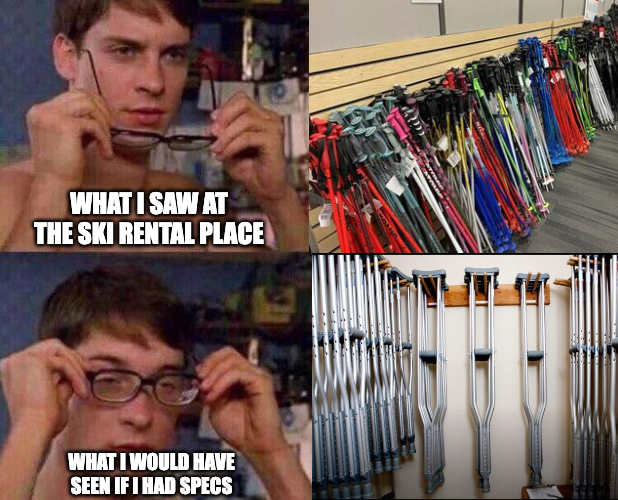
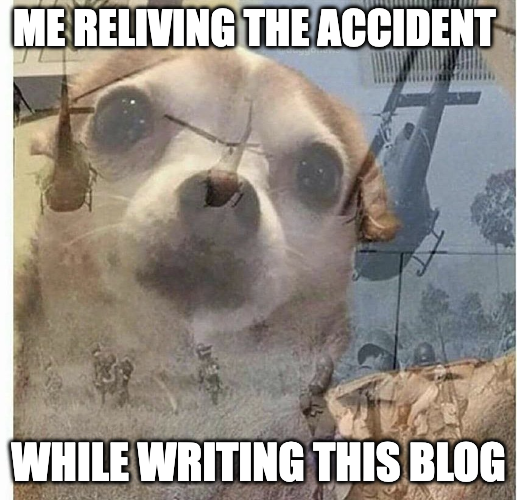
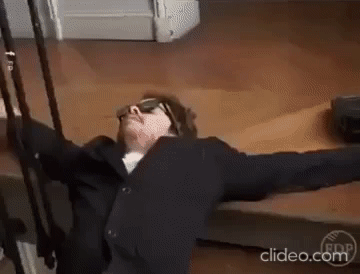
Aftermath
After being taken to the first aid centre, I was put on a bed for the nurse to check up on me. While I was waiting, I happened to hear a conversation happening on the bed next to mine. They were talking about a girl who had fallen through an 18 feet jump and had landed on her back and had to be airlifted from there. That’s when I realised that I was lucky with what happened to me because the random skier who jumped across could have landed on my head which luckily did not happen. After that, I was given a cardboard splint for my knee and was advised to go to a doctor and get it x-rayed and looked up by a medical professional.
Anatomy lecture
Before I start using some medical jargon to explain the injury, I will try to give a brief overview of the knee anatomy here:
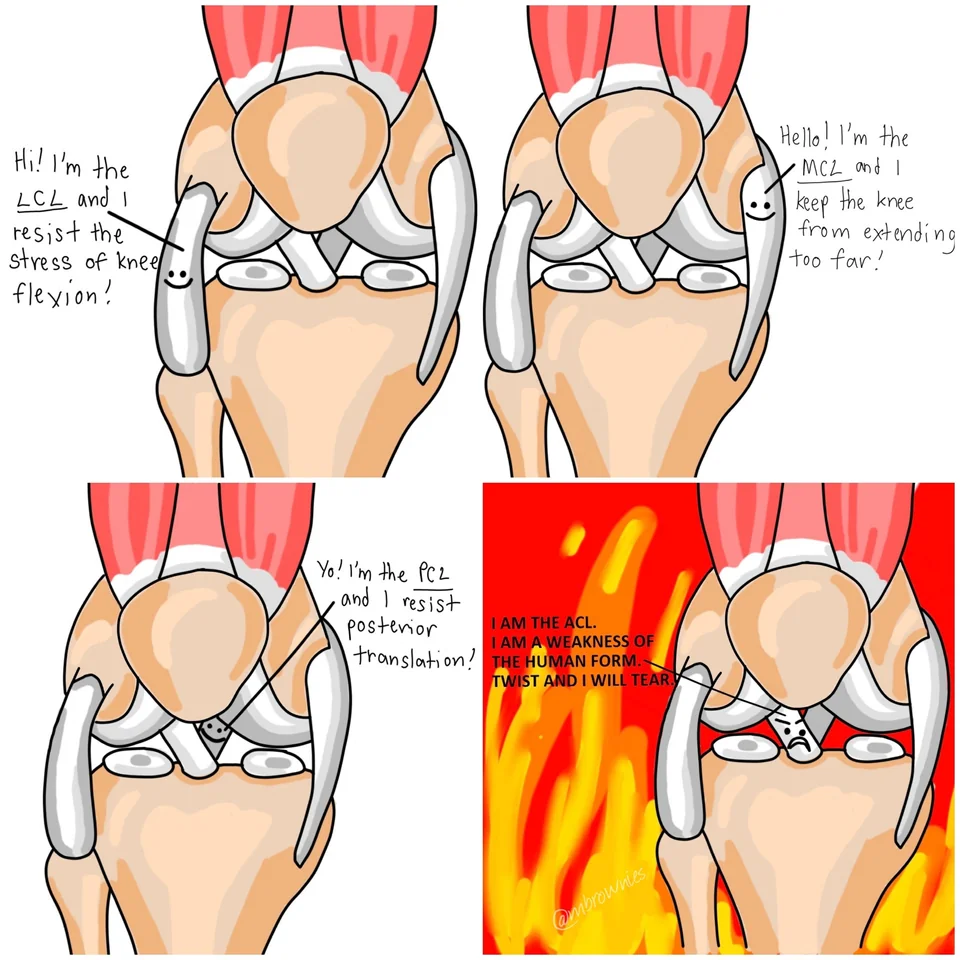
What do knee ligaments do?
- Absorb shock when the foot strikes a surface.
- Stabilise the knee joint and prevent it from moving in unsafe directions (prevent twisting or collapsing of the knee).
- Connect thigh bone to lower leg bones
What ligaments does a functioning knee have?
- Collateral ligaments: On each side of the knee. The Medial Collateral Ligament (MCL) is on the inner side of the knee which connects the thigh bone (femur) to the shin bone (tibia). The Lateral Collateral Ligament (LCL) is on the outer side of the knee which connects the femur to the calf bone (fibula). These two ligaments prevent the knee from moving side to side.
- Cruciate ligaments: The two cruciate ligaments are inside your knee joint and connect your femur to your tibia. They cross each other to create an X. The anterior cruciate ligament (ACL) is located toward the front of the knee. The posterior cruciate ligament (PCL) is behind the ACL. The cruciate ligaments control the way your knee moves front to back.
Why does an ACL tear require surgery? I have a really good immune system, so I guess that would mean I don’t k-need surgeries.
The ACL cannot heal on its own because there is no blood supply to this ligament. So regardless of whether you have a god-tier immune level, you will k-need to get the surgery done to fix it if you want to do physical activities which require twisting, pivoting, turning, etc.
What is used to replace the torn ligament?
It is generally one of the 4 options:
- Patella tendon-bond autograft: the central one-third of the patella tendon is removed along with a piece of bone at the attachment sites at the kneecap and tibia.
- Hamstring autograft: two tendons from the hamstring muscles are taken out and are wrapped together to form the new ACL.
- Quadriceps tendon grafts: a tendon from the quadriceps is taken to form the new ACL.
- Allografts: in which donor tissue is taken from a tissue bank to replace the ACL.
You can refer this document to see the advantages and disadvantages of each graft type.
Diagnosis
Coming back to my story of the injury: After coming back home, I started searching on the internet for what could have happened to my knee. In hindsight, I should not have done this because most of the results for symptom diagnosis were quite off and heartbreaking. The next day I get the x-ray done at MIT Medical and it turns out that it is not a fracture (which was a relief). After this, I had to wait another week to get an appointment at MIT Medical with an orthopaedic doctor. After meeting him for the first time, he does the Lachman test and claims that it might be an ACL tear and refers me to the Mount Auburn hospital to get an MRI scan and an ortho surgeon at MIT Medical. He also suggests I go for physiotherapy.
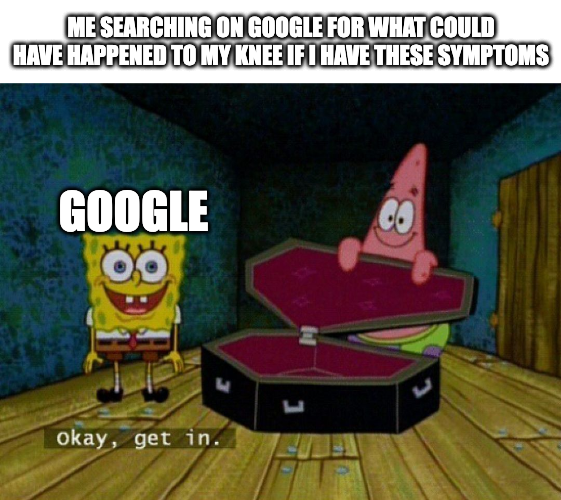
So I get my physio appointment and go to the clinic for my first session. I explain the accident to him, after which he does a few tests and states that it might be an ACL tear. Then he explains the reasons one should get surgery to fix it. But along with this he also states that surgery is not necessary if I am not into any physical activity which requires twisting and turning. To which I reply that I do play sports which require that and hence it would be a good idea to get the surgery done. That is when I started preparing myself mentally that I will k-need to get surgery done on my leg which could possibly mean that I may not be able to walk for a few weeks after the surgery.
I had never done an MRI scan before and didn’t know what to expect. I got an appointment for my MRI scan two weeks after my first ortho appointment. For people who have never done an MRI scan before, it is basically a cross between a spaceship and a giant metal coffin. It’s like being inside a washing machine on steroids. Also, you are instructed to stay perfectly still for what feels like an eternity, while the machine pounds you with magnetic waves. While this is happening, you get to hear the harmo-knee of jackhammers mixed with occasional screeching noises by our very own MC Magnetix. Overall, the MRI machine is the perfect way to induce panic attacks and anxiety in patients. But hey, at least it gives you a chance to catch up on the nap time you lost because of worrying about the injury while you lie inside that cosy metal tube.
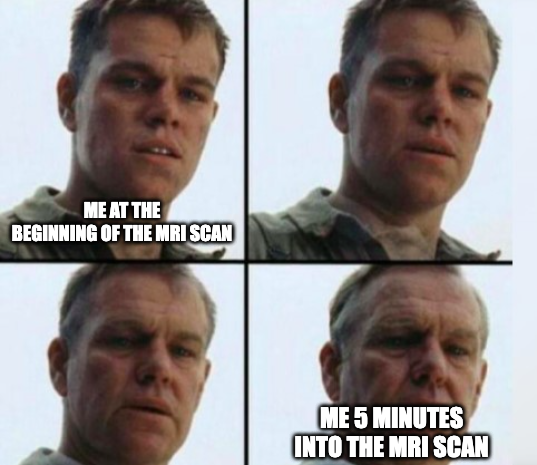
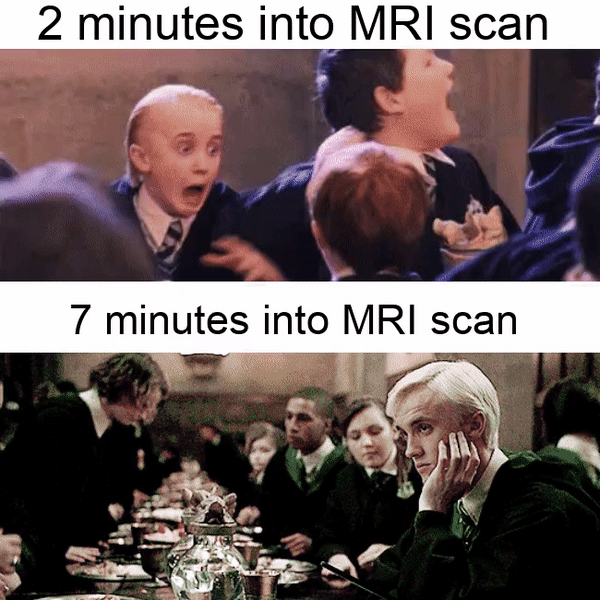
Once the MRI results were out, it seemed that I had a royal flush of the stuff that I could damage in my knee. The MRI results said that I had a complete tear of my ACL, a partial tear of the MCL a sprain of the LCL and PCL, a horizontal tear of the medial meniscus and other random minor things which I wouldn’t point out here. The surgeon suggested I get the quad tendon graft because of my age, activity levels and most importantly it was the graft he was most comfortable with.
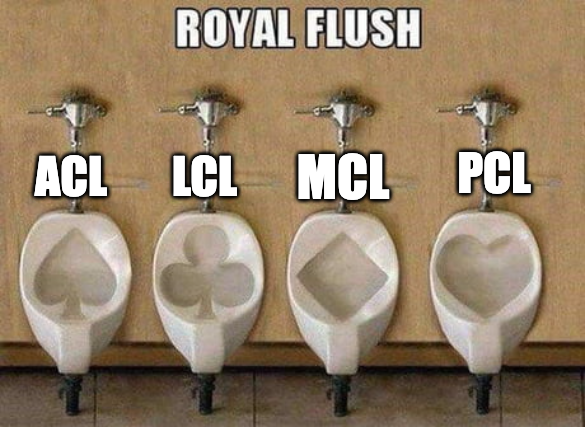
Pre-surgery PT
Now, since I had a tear of the MCL as well, I had to wait to get the surgery done. Since MCL heals on its own the surgeon suggested waiting for a few weeks for it to get better and the swelling to reduce. Also, it was necessary to get the range of motion (ROM) of my knee back so that it gets easier to get the get of ROM back after the surgery and reduce the swelling. This meant that I had to do PT before the surgery as well. And I am glad I did that because:
- It strengthened my muscles before the surgery so the expected muscle loss after the surgery would be less
- Increased the range of motion of my knee
- Gave me time to mentally prepare me for the surgery and PT after surgery
- Let me get familiar with my PT which I feel is quite important because I trusted my PT completely before the surgery which meant I did the PT exercises diligently.
Most of the pre-OP PT involved strength training which focussed on getting the quads, hamstrings, and glutes stronger.
Surgery day
The surgery was on 20th April 2022. I was totally nervous that day although I was excited about it before that day! When we reached the surgical suite, I was told to get changed into the fancy medical gown. Then I was given general anaesthesia. Before this, I met the surgeon briefly who checked the ROM of my leg and was happy with it and the swelling. He explained the procedure to me as: “We are going to make a small cut right above your knee to harvest the quad tendon (which will be my new ACL). Small incisions will be made next to the knee joint for inserting the arthroscope (a fancy camera to see what’s happening in there) and a saline flow to expand the joint to improve visualisation. Then they will drill a hole in my tibia (shin bone) and pass a guide wire to place a graft on the knee joint. And then another drill in the femur (thigh bone) to pull it into place.” This video has a good explanation of the procedure. Yes, the procedure seems a bit “gory” if you are not used to medical procedures! And then I am taken to the operating theatre. Moments after being taken there all I remember is falling asleep in that coldish room. And then the surgery happens.
After the surgery is done, I slowly wake up from my anaesthesia. While the nurse is transferring me from one room to another on this mobile bed, I detected a sudden change in the speed. That’s when I ask my nurse “Are we in a DRS zone and have we activated the DRS and is that why we are going faster than normal?” This sentence wouldn’t make sense if you do not follow Formula 1. DRS stands for Drag Reduction System and is basically changing the angle of the rear wing so that you can go faster. It is just that my brain was high with anaesthesia and anything I spoke then did not make sense. Apparently, I spoke more random stuff which I do not remember and this was quite amusing for the nurse who was attending me. This is supposed to be pretty common, look up videos of people waking from anaesthesia! After I was actually conscious, I remember the first thing asking if the surgery went right and to my relief the answer was yes! I was already packaged in the knee brace and surgical socks. After that, we left the place to go back home and collect the medicines (painkillers and antibiotics) I was supposed to have.
Post-OP
Now this is the hardest part of my ACL recovery - actually recovering from the surgery. Here is a timeline of the notable things that happened after my surgery.
- Day 0: Attempt to tighten the quad muscles but could not even do that. Seemed like I had lost control of the motor skills of my left leg. I was told to take it nice and knee-sy on the first 2 days by my surgeon since the nerve block was still active.
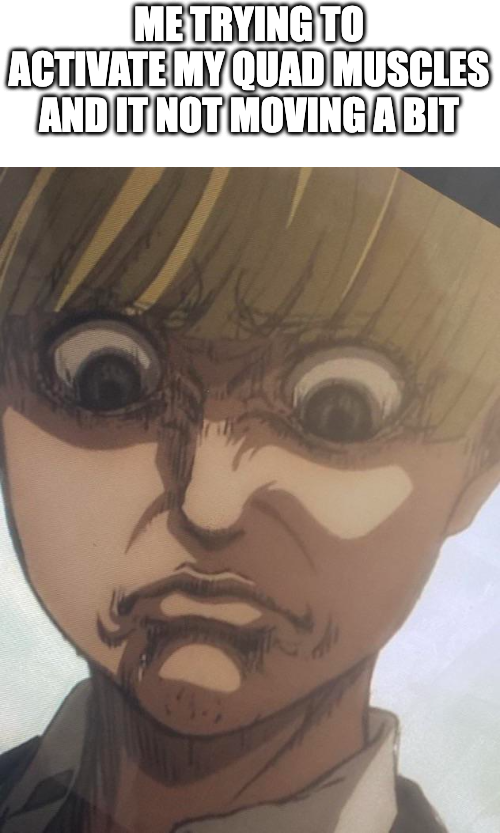
- Day 1: Got diagnosed with Covid. Don’t know how it happened, I tested negative before the surgery.
- Day 2: First PT appointment (virtual) where I was given a few exercises to try out. Had my first shower after the surgery. Walking with crutches for the first time!
- Day 3: Hip abduction unlocked. Could move my leg sideways while handling the weight of my leg with my hip muscles.
- Day 5: Throbbing pain near the wounds, body temperature got really hot. Felt like someone was cutting through my leg with a saw. Had probably never experienced this much pain in my life before for such a prolonged period.
- Day 6: Living in hell continued.
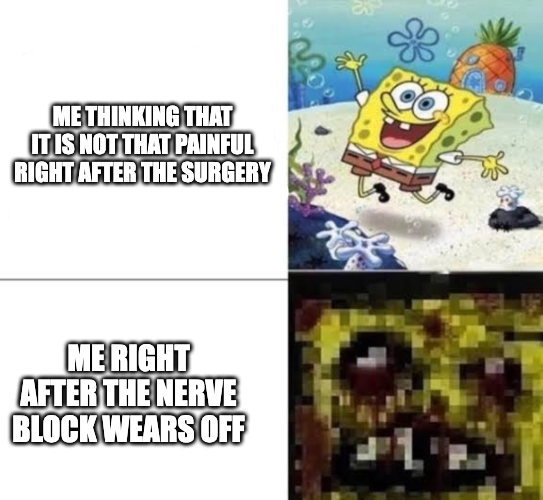
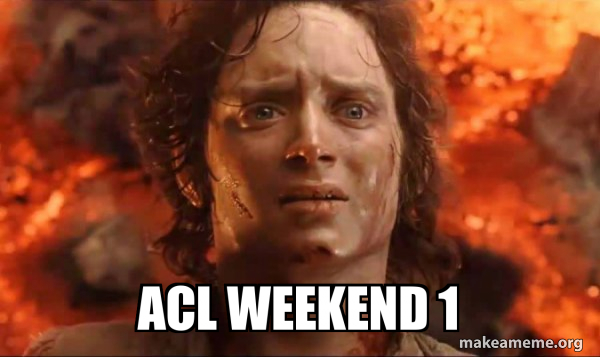
- Day 7: Straight Leg Raises (SLRs) with a bolster under the knee for the first time. Back to the land of the living.
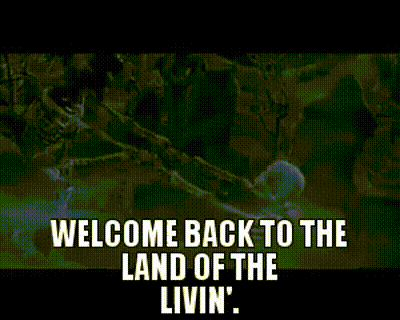
Day 8: Post-op surgeon appointment. Removed the stitches, and was allowed to shower daily without cover. Was told to use the bulky knee brace till I could do 10 SLRs for 10 repetitions with 10-second holds at the top. Was told that the quads have more swelling than the knee and hence use ice compression on the quads.
Day 9: Unlocked unassisted SLRs. First shower without leg cover. Completed the 10rep x 10sec SLR test to determine brace removal. Finally, I was free of that bulky thingamabob!
Day 10: Was feeling quite lethargic and made my first attempt to exercise. Did 5 sets of 20 repetitions of push-ups before I was exhausted. Realised that my cardiovascular strength had gone down. Weighed me and had lost 8 kgs in a week because of muscle loss.
Day 11: Another attempt at doing exercises at home. This time could do more sets of push-ups.
Day 13: First in-person physio appointment. Was told to work on flexion and extension. 99-degree flexion, 8-degree extension. Target of 120-degree flexion and 3-degree extension by Day 20. Went to the gym for the first time after getting PTs approval. Did a back workout and was feeling quite tired to finish these sets.

Day 14: Started working on my SM thesis because the deadline was quite near if I wanted to graduate to start my PhD in the Spring term itself.
Day 20: Walked around 7.5 km with a single crutch after getting approval from PT for walking longer distances. Failed to reach the ROM range target set earlier.
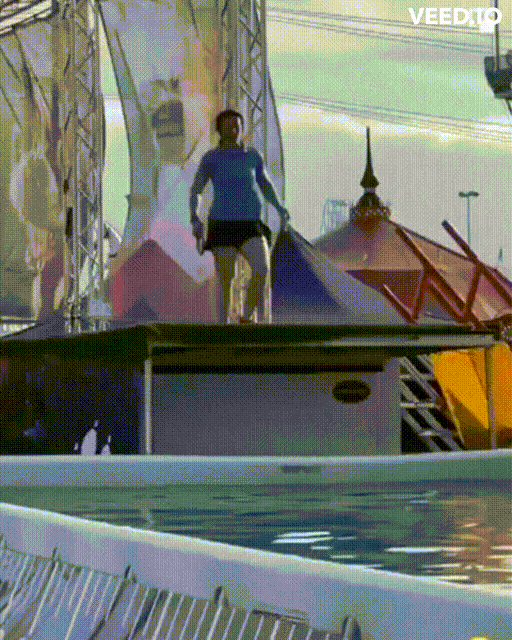
I had a really hard time getting my ROM back. My normal ROM is 164 degrees of flexion (bend) and -8 degree of extension (hyperextension) which is more than average. This meant I had to work more to get the ROM back. I hated doing those ROM exercises because they were so painful! I had to bend my knee for 20 reps and push it to make it bend more. The swelling in the knee region did not allow me to bend more because the effusion in the knee capsule would push against the skin. And because I did not get my ROM back, the swelling was not going away. This was a vicious cycle my knee was stuck in. At this point, I was meeting my PT 3 times a week so that we could work on getting the ROM back.
I did a lot of strength training and ROM exercises during this period. But the weight I could use for my leg exercises was quite small compared to what I was using for my upper body exercises. Although I was doing leg days at the gym 3 times a week, I still ended up looking like a Dorito with a large shoulder/upper body and small legs. I was also doing exercise bikes every day for 20 minutes at medium intensity after my strength training as suggested by my surgeon.
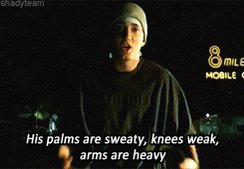
Day 38: Walked for my commencement at MIT for my SM degree! Had to sit on a chair for a long time which felt a bit uncomfortable.
Day 130: Tried out swimming for the first time. Could do most of the strokes/kicks without many issues with my cardio. Seemed like hip strength had increased before surgery because dolphin kicks felt stronger. Frog kicks were a bit uncomfortable and hence didn’t try out much of breaststrokes.
Day 132: Light jogging for the first time and it felt good.
Day 138: Did jump ropes for the first time and could do almost all the tricks I could do before the injury.
Day 146: Straight broad jumps, 45-degree jumps and box jumps. This was the first time in like 8 months I had jumped properly which felt really good!
Day 150: Final appointment with my surgeon. He said that the progress is really good ,especially with the strength. He checked if I could do single-leg squats to an equal depth with both my legs which I could. He said that I do not have to see him anymore! He also said that I could do light sports 1 month from then which was really good news for me!
After this, I stopped keeping a track of the exact dates important stuff happened to my knee.
Milestones
ROM
Getting to 90% of the ROM of the other leg. My better leg had a range of -8 degrees of extension to 164 degrees of flexion. Once we reached around 85% of it we decreased the frequency of working on the ROM exercises.
Strength training
Getting the same quad and hamstring strength in both of my legs was an important milestone. The day we decided to stop focussing a lot on strength training was when my operated leg had more strength than my other leg according to the tests we did!
Mental preparation
As much as the recovery is physical, the mental aspect of the recovery is generally overshadowed. There have been a lot of studies (I am only citing one study because I am not writing a research paper here) which show that athletes often report anger, depression, anxiety, lack of confidence and fear of sustaining a new injury with evidence that these psychological disturbances may affect recovery and return to sport. I myself have had this where my performance in the sports I played was affected because of this fear of re-injuring my knee. A major part of my PT was spent on preparing myself mentally for some of the drills. In the beginning, some of the drills seemed impossible or I had the fear of my knee caving in. But my PT had to drill this thought in my head that my knee and ACL are strong enough now and can take it. Although I am still not 100% confident about my knee the trust I have in my knee’s stability has increased over time. And I hope to get better at the mental aspect of it soon.
Return to sports tests
The tests I had to pass according to my surgeon to be able to determine if I am ready to return to sports.
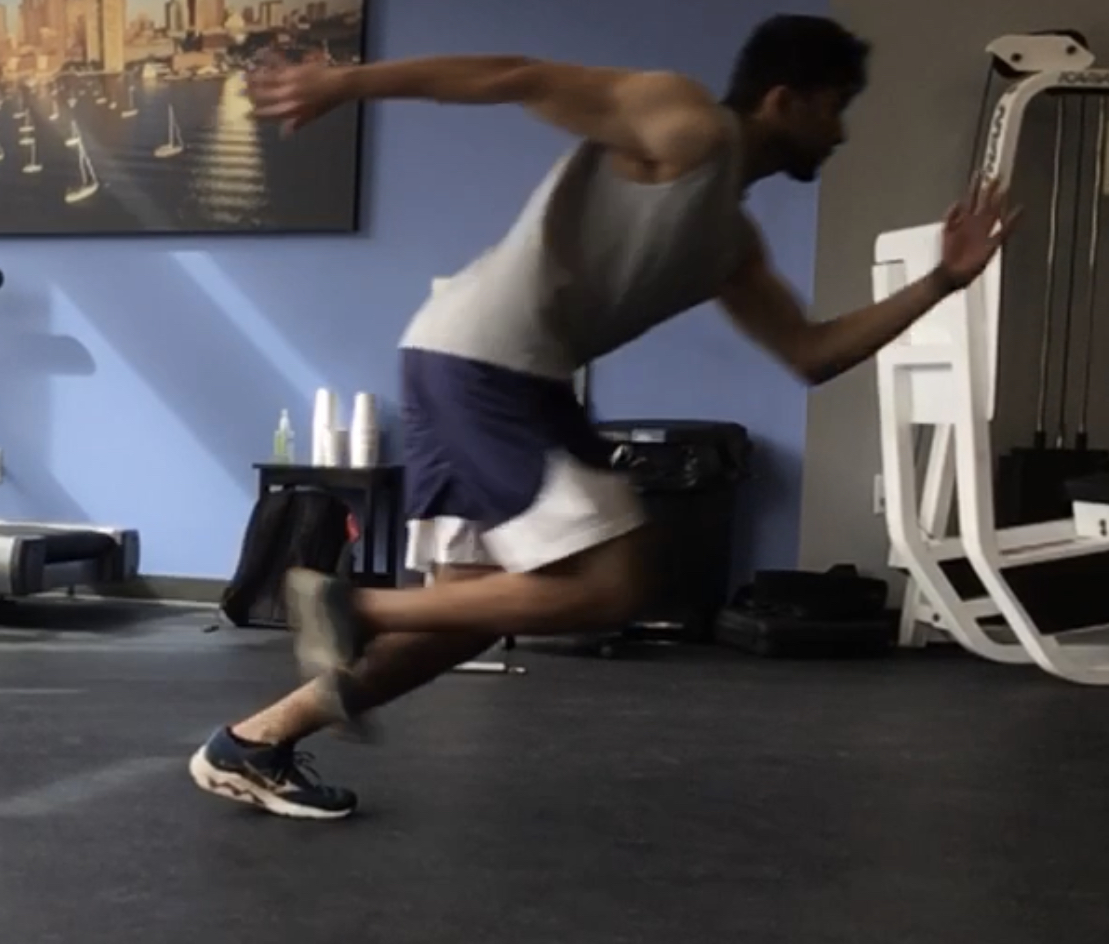

Mistakes I made during rehab
Slow ROM: I was really slow with getting my ROM back. Part of it was because I hated doing those ROM exercises. I did not do them at the recommended frequency after one point because I got discouraged by the results. I think if I would have persisted with those exercises I would have gotten my ROM back much earlier.
Not communicating properly: I did not communicate properly with my friends after my surgery. This led me to not talk to a lot of my friends for most of the initial part of my recovery. All I did for a few months after my surgery was PT, research/work, play the guitar, talk to my family, eat and sleep. I did not socialise at all since I could not get out of my house (except to the gym). Since I didn’t try reaching out to anyone, I guess everyone thought I k-needed some time off. At that point, I was expecting some of my friends to take out some time to check up on me but what I did not realise then was that they themselves would be busy with their own stuff and it is not going to happen if I do not reply back to anyone’s attempts to contact me. In hindsight, I should have maybe taken more effort to talk to people. So in case you have any friend who has/is going through recovery from an injury, please reach out to them. Message them, or maybe just go and meet them in person. Just talking about stuff helps a lot! Maybe play board games with them or do an activity which is not physically demanding.
Comparing my progress to others: I lingered on the r/ACL subreddit almost every day. I used to see people make exceptional progress with their recovery there. Also, I was comparing my recovery to other athletes’ recoveries. Athletes are literally paid to get better from their injuries and spend almost all of their day working on their recovery with a personalised PT team. This motivated me to push myself harder and it did work. According to my PT, I did much better than average in getting my strength back. But I did not follow that for my ROM exercises. The comparison with others made me feel sad which made me work less on it. So I would say that comparing your progress to others can work in both ways and you should definitely do that with a pinch of salt.
What were the good things that happened because of the injury?
Getting better at guitar: Since I could not do a lot of my hobbies which involved sports/physical activities, I had to resort to activities within my room. I took this opportunity to spend some time getting better at playing the guitar. I started spending around 2-3 hours daily playing guitar. This led me to learn some of my favourite guitar solos and set me up to learn more technical and faster solos.
Building my own electric guitar from scratch: Playing guitar almost every day made me curious about how one could achieve different sounds like the elephant and horse sound by Eddie van Halen or pinch harmonics. This led me to study more about how electric guitars actually work. I spent some time during the summer break understanding how to make your own guitar. This finally led me to make my own guitar (see below) which I call The Frankenstrat (inspired by EVH)
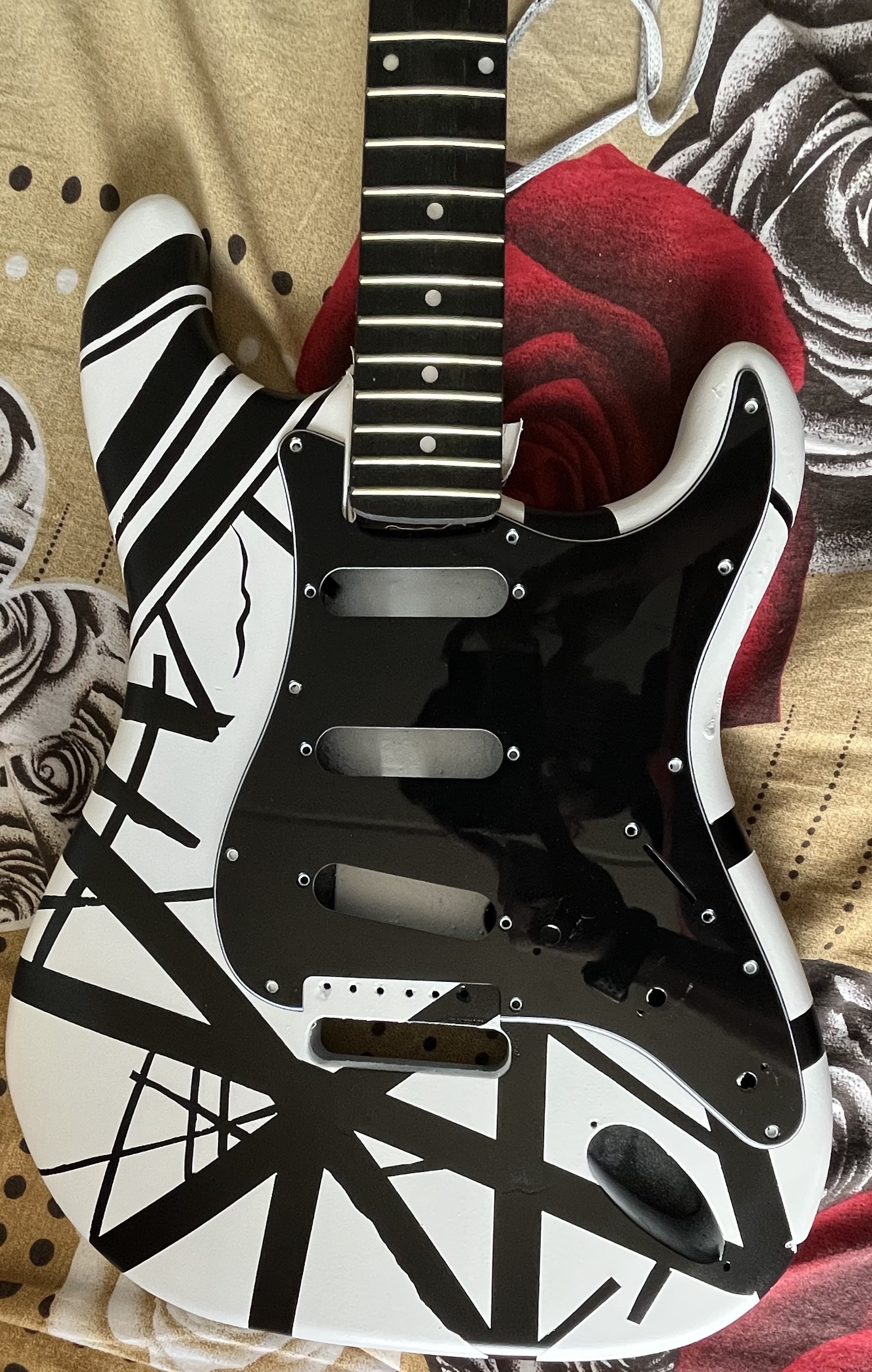
Getting research done: As I was not allowed to play sports, I also spent quite some time on my research. I had to make up for the time I was not able to work and since I had a lot of time in my hand which would have been used otherwise on my other hobbies and socialising, I got a lot of work done. This led me to write up a few research papers and attend conferences at some really neat places like New Orleans and New Zealand.
Getting fitter than before: Since there were only a few people I was talking to in-person right after my surgery, I became good friends with my PT. We even went to a few concerts together! I got to know more about different PT exercises in detail. My PT would give me customised exercises depending on what my targets were. Want to get stronger? Done, here’s a set of strength training exercises you k-need to do. Want to get faster at sprinting? Just do these hip, hamstring, glutes and lower back exercises. Want to jump higher? Here you go with the plyometrics. I would say that doing PT has made me fitter and more athletic than I was before.
How does it feel now?
Although the recovery period was long and gruesome and sometimes I felt like this is really bad as I cannot do most of the outdoorsy activities I liked doing, the part after being cleared to do stuff was really fulfilling! I was cleared for light sports and activities which did not involve a lot of twisting and turning 8 months after my surgery. Things I did after surgery (obviously got permission from my PT before doing this):
- Hiking
- Kayaking
- White water rafting
- Mountain biking (on actual bumpy trails)
- Skydiving
- Long-distance cycling
- Triathlon (Sprint format or half of the Olympic distance)
- Played Cricket Nationals (although there was a slight injury scare there, it wasn’t anything serious)
After having gone through this arduous recovery I have more respect for athletes and anyone else who has physical daily jobs and the amount of effort they put into their recovery. Also, every time I see anyone injure their knee even mildly, I wince in pain! I guess you get this magical “feel others’ knee pain” power once you go through this surgery.
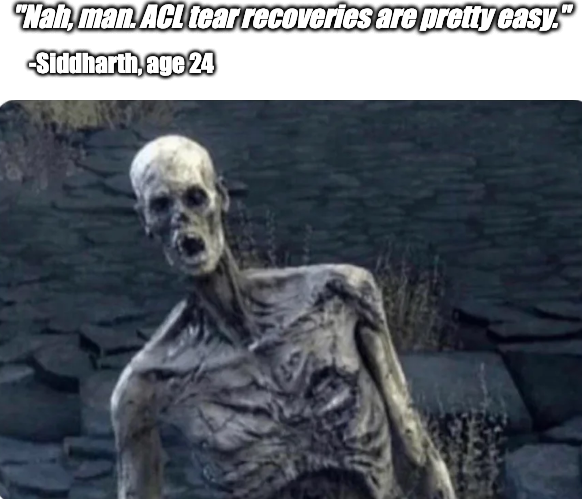

Things I (can) do now to avoid a retear”
- First and foremost I will probably not ski again.
- Keep on training my muscles around the knee. I used to just train my quads before the injury and focus a little on the other leg muscles. Now I try to train all muscles of my legs separately: quads (including VMO%20compartment%20of%20the%20thigh.)), hamstrings, glutes, tibialis, calves, hip flexors, hip abductors and adductors. Strengthening every part of my leg has also helped me in getting more confidence in my leg’s stability.
- Mentally tell myself that my knee is alright and will not cave in although I still wouldn’t go crazy with the activities I would do with my knee.
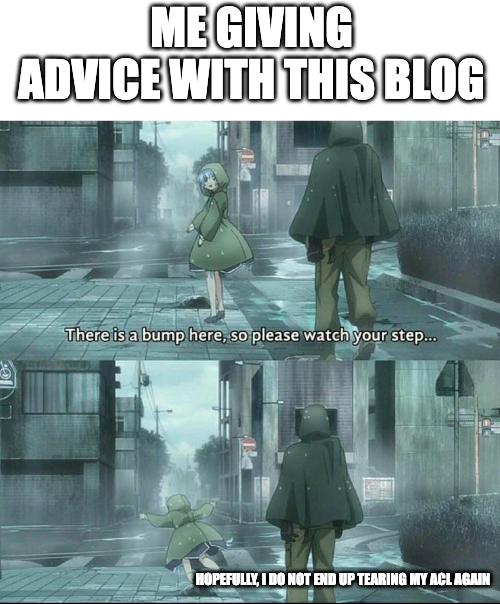
Resources
- The ACL Athlete Podcast: This is a nice podcast about ACL recoveries I listened to a few days after my surgery.
- ACL recovery journey of Hector Bellerin (Arsenal football player): I used this to keep track of my progress and see that it gets better.
- r/ACL: Subreddit about all things ACL. Remember some people over there will have much faster progress than you. It doesn’t matter if you are slower. All that matters is that you are getting better than what you were before.
- Kneesovertoesguy: an excellent resource for exercises related to knee rehab.
- My workout playlist for a few days.
Acknowledgements
I would like to thank everyone who helped me during my ACL recovery especially right after the surgery.
- My dad, mum and my sister for being a constant support and being there for me throughout my ACL recovery. I could talk to them about anything that bothered me. My dad for travelling to Boston to help me out with my surgery. My mum wanted to come here but couldn’t because she didn’t get a visa in time.
- My aunt and her family for helping me out with everything before and after the surgery.
- My surgeon Dr Thomas Burke for being a really kind and nice surgeon and fixing me up.
- My PT Kyle Mahoney for being the most awesome PT one could have. He gave me the right set of exercises
- My research advisor Hamsa Balakrishnan for being supportive during my injury and helping me write my SM thesis which was due 3 weeks after my surgery.
- Elizabeth Guttenberg and MIT OGE for helping me get extensions for my course deadlines and for getting me emergency healthcare funding with which I could get the really nice and fancy ice-machine (which was not covered by my insurance) for my recovery.
- Patrick, the ski patrol who sled me down that wretched slope after my injury and the kind lady who alerted the ski patrol when I was just wincing around in pain after the accident.
- Evan Kramer for getting me back home after the injury in his car.
- Sathwik Chadaga and Keshav Gupta for buying groceries when I couldn’t get out of my house before my surgery.
- Everyone else who I collaborated with for research/classes for being quite understanding about my situation.
- I have tried to include everyone I could remember but it is possible that I might have missed you. It is just that I was trying to get this blog up by 20th April 2023 and was in a time crunch to write this!

Leave a Comment